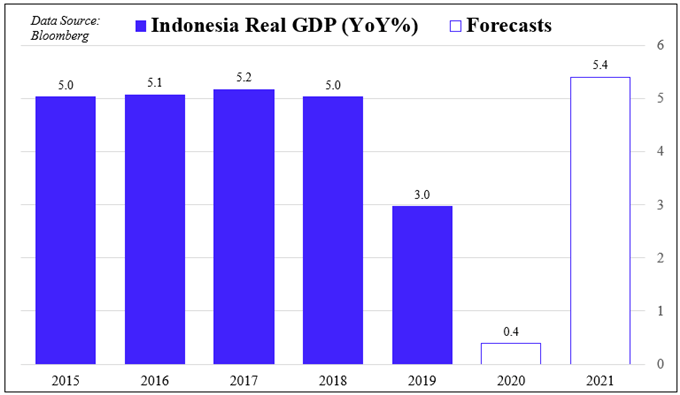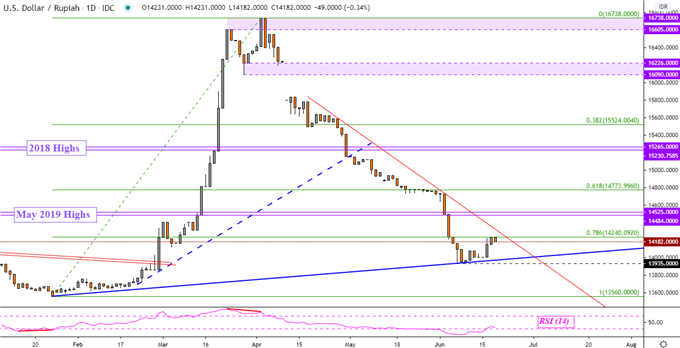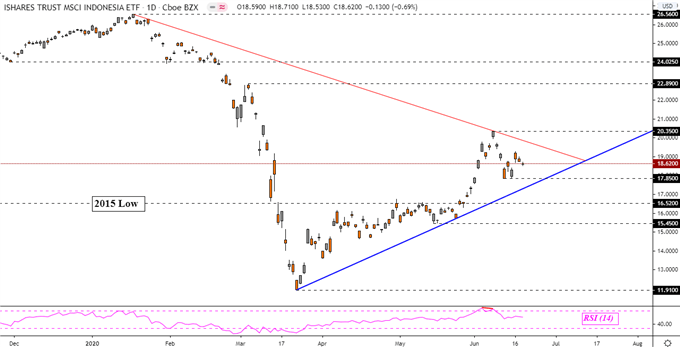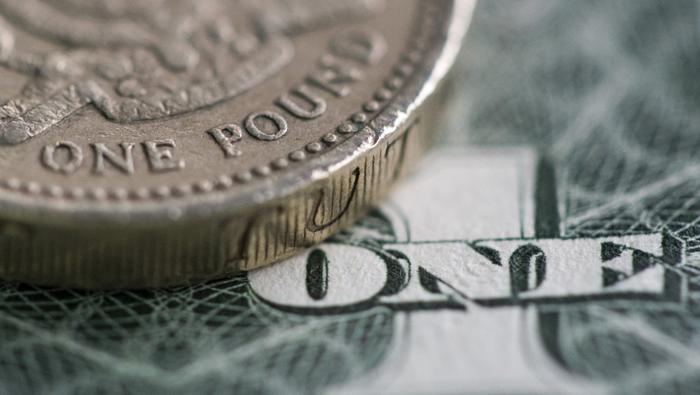US Dollar, Indonesian Rupiah, USD/IDR, Bank of Indonesia, Jakarta Composite – Talking Points
- US Dollar fell versus Indonesian Rupiah despite BI rate cut
- The central bank may cushion future IDR selling pressure
- USD/IDR could rise on fears of a second coronavirus wave
The US Dollar lost slight ground to the Indonesian Rupiah over the past 24 hours. This is despite the Bank of Indonesia (BI) cutting its benchmark 7-day reverse repurchasing rate to 4.25% from 4.50%. As anticipated, the central bank continued to stress that its currency is undervalued. Governor Perry Warjiyo mentioned that he sees scope for IDR to gain further as the BI continues market intervention.



In practice, this could mean that the Bank of Indonesia steps up efforts to lessen IDR selling pressure in the near term. This may arise from capital outflows should risk aversion engulf financial markets as it did earlier this year during the coronavirus outbreak. Then, ASEAN central banks stepped up efforts to mitigate FX depreciation by selling foreign exchange reserves, opening the door to greater scrutiny from investors.
The BI envisions that USD/IDR remains within a 14,000 – 14,600 zone this year, with the range falling slightly to 13,700 – 14,300 next year. Finance Minister Sri Mulyani Indrawati lowered the estimated 2020 GDP growth projection to (-0.4% - 1%) from (-0.4% - 2.3%) prior. On a positive note, output is expected to pick up in a v-shaped fashion next year – see chart below.
Ahead, the haven-linked US Dollar could appreciate against the Rupiah as fears of a second wave of Covid-19 spooks traders. Recent new hotspots include China’s capital, Beijing, and in parts of the United States like Texas and Oklahoma. In Indonesia, the nation reported its highest daily cases yesterday at 1,331. If governments reverse lockdown easing measures, that could likely prolong the Covid-19 economic slump.
Discover your trading personality to help find optimal forms of analyzing financial markets
V-Shaped Indonesian GDP Recovery?

Indonesian Rupiah Technical Analysis
USD/IDR is running out of room to consolidate between key technical barriers. The first is rising support from January – blue line – and the second descending resistance from April – red line. Eventually, one of the two will give way. Pushing higher would expose highs from May 2019, creating a zone of resistance between 14484 – 14525. Otherwise, clearing support may open the door to testing the January low at 13560.
USD/IDR – Daily Chart

Chart Created Using TradingView
iShares Trust MSCI Indonesia ETF
After the Bank of Indonesia, the local benchmark stock index – the Jakarta Composite – fell 1.25% amid lowered growth projections. On the daily chart below is the MSCI Indonesia ETF (EIDO), which closely mimics the former. Much like with USD/IDR, the latter is running out of room to consolidate as it approaches the intersection of converging trend lines.
A push above 20.35 with confirmation could signal a reinvigoration in local equities as sentiment improves. Conversely, falling under 17.85 risks overturning the uptrend from March’s bottom.
EIDO – Daily Chart

Chart Created Using TradingView
-- Written by Daniel Dubrovsky, Currency Analyst for DailyFX.com
To contact Daniel, use the comments section below or @ddubrovskyFX on Twitter






